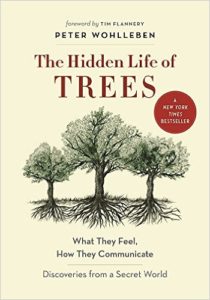The Hidden Life of Trees by Peter Wohlleben
 You’ll change the way you look at trees after reading this book by German forester Peter Wohlleben (see excerpt 24/05). Twenty years ago he adopted a more enlightened approach to forestry and applied it to the forest he manages near his home village of Hümmel. One ecologist who has inspired him is Dr Suzanne Simard, who discovered the “wood wide web” of forests; she’s written the closing notes for Wohlleben’s book.
You’ll change the way you look at trees after reading this book by German forester Peter Wohlleben (see excerpt 24/05). Twenty years ago he adopted a more enlightened approach to forestry and applied it to the forest he manages near his home village of Hümmel. One ecologist who has inspired him is Dr Suzanne Simard, who discovered the “wood wide web” of forests; she’s written the closing notes for Wohlleben’s book.
It’s fascinating to know that trees are social beings and have a form of language. They communicate with their own species and others, giving off scent compounds when under threat and activating chemicals that deter insects from doing further damage to them. They have a symbiotic relationship with fungi that help transmit electrical signals from the roots of one tree to another. They can send and hear sound waves, and can feel pain and joy. Trees create microclimates in forests, plan future procreation and adjust to lean and plentiful times. And while cooperation is a hallmark, competition is also a feature where mother trees exert “tough love”, capturing the light and preventing their offspring from reaching adolescence too soon so that adults and children can mature properly.
Wohlleben focuses mainly on the deciduous trees of Central Europe, such as beech, oak, spruce, pine and fir which age slowly and can have centuries-long life spans, but his findings have bearing on trees and forests worldwide. His book is enchanting as well as informative.
Reviewed by Ruth Parnell

